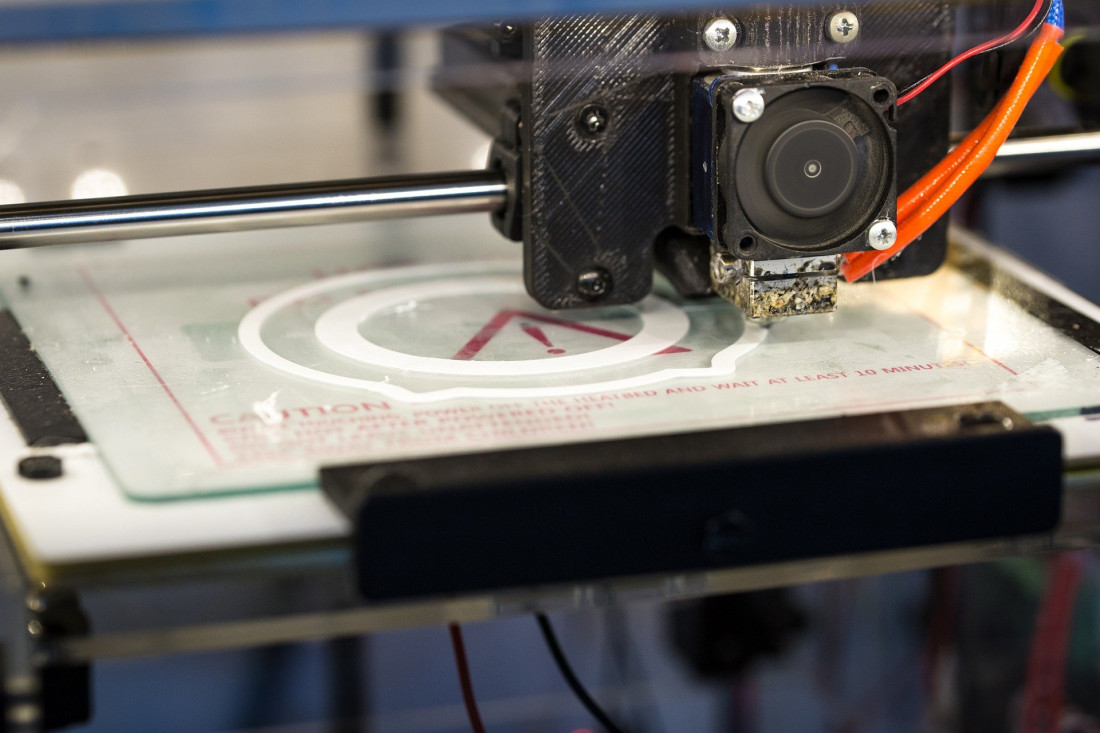Chemists from MiT have developed a process that potentially enables the polymers used in 3D printing to be altered, even after they have been printed.
Up to now, once polymers have been printed, they are considered ‘dead’ and no changes can be made to the polymer chains, but now, the door has been opened for monomers to be added that can amend the chemical and mechanical composition of printed plastics. This enables the researchers to adjust the size of printed objects, add water repellent properties, or even to fuse two printed objects together, simply by shining light on them, opening a world of far more complex 3D printed constructions.
Jeremiah Johnson, the Firmenich Career Development Associate Professor of Chemistry at MIT, explained the concept as, “The idea that you could print a material and subsequently take that material and, using light, morph the material into something else, or grow the material further.”
The story began in 2013, when, as the online journal Phys.org reports, “Johnson and his colleagues [former MIT postdoc Mao Chen and graduate student Yuwei Gu] set out to create adaptable 3-D-printed structures by taking advantage of a technique known as ‘living polymerization’, which yields materials whose growth can be halted and then restarted later on.” The journal continues by describing how the researchers found, “that they could use a type of polymerization stimulated by ultraviolet light to add new features to 3-D-printed materials. After printing an object, the researchers used ultraviolet light to break apart the polymers at certain points, creating very reactive molecules called free radicals. These radicals would then bind to new monomers from a solution surrounding the object, incorporating them into the original material.”
Johnson outlined the clear benefit of this at the time, saying, “The advantage is that you can turn the light on and the chains grow, and you turn the light off and they stop. [So that], in principle, you can repeat that indefinitely and they can continue growing and growing.”
Now the research team has taken their discovery to the next level, in a way that makes 3D printing a much less permanent result. The journal MiT News, notes how this latest breakthrough is an addition to their previous research, stating, “In their next effort, the researchers designed new polymers that are also reactivated by light, but in a slightly different way. Each of the polymers contains chemical groups that act like a folded up accordion. These chemical groups, known as TTCs, can be activated by organic catalysts that are turned on by light. When blue light from an LED shines on the catalyst, it attaches new monomers to the TTCs, making them stretch out. As these monomers are incorporated uniformly throughout the structure, they give the material new properties.”
“That’s the breakthrough in this paper: We really have a truly living method where we can take macroscopic materials and grow them in the way we want to,” said Johnson.
The researchers have published their results in the ACS journal Central Science, declaring that, “we have developed a first-generation living additive manufacturing process called ‘photoredox catalyzed growth‘ (PRCG) that enables the controlled insertion of monomers and cross-linkers into polymer networks to produce complex daughter objects from a single type of parent object. PRCG makes use of a newly developed photoredox catalyzed polymerization that avoids the undesired chain termination processes that are present in traditional free radical and iniferter polymerizations. Our approach enabled the fabrication of daughter gels with complex compositions and mechanical properties that would be difficult or impossible to achieve using traditional free radical polymerization methods.”
These monomers are able to adjust chemical and mechanical properties, such as stiffness or hydrophobicity (affinity for water), as well as swelling or contracting under temperature stimuli.
While the researchers acknowledge that the process still needs a lot of refining, stating that, “For practical applications, PRCG will require extensive development: the polymerization rate should be increased by at least an order of magnitude, the oxygen tolerance should be thoroughly investigated, and the expansion to bulk polymeric materials should be pursued.” Also, their work to date has also largely focused on gels, but they also make clear that their work is ongoing, and that numerous alternative catalysts are already being tested that are not affected by the presence of oxygen.
If these limitations are overcome, then 3D printing as a real-world production process may really begin to take-off. The idea that plastics can be printed and then amended, chemically or mechanically, by applying light is sure to attract the interest of polymer traders and plastics manufacturers worldwide.
Imagine, for example, how products could be improved if the consumer were able to fuse plastics parts together by shining a light at the joint. While other products could also be amended, for example, so that they travel flexible and can then be made rigid, or made hydrophobic, or made softer, or expand, or contract. Are these the 21st century polymers we’ve been waiting for?

